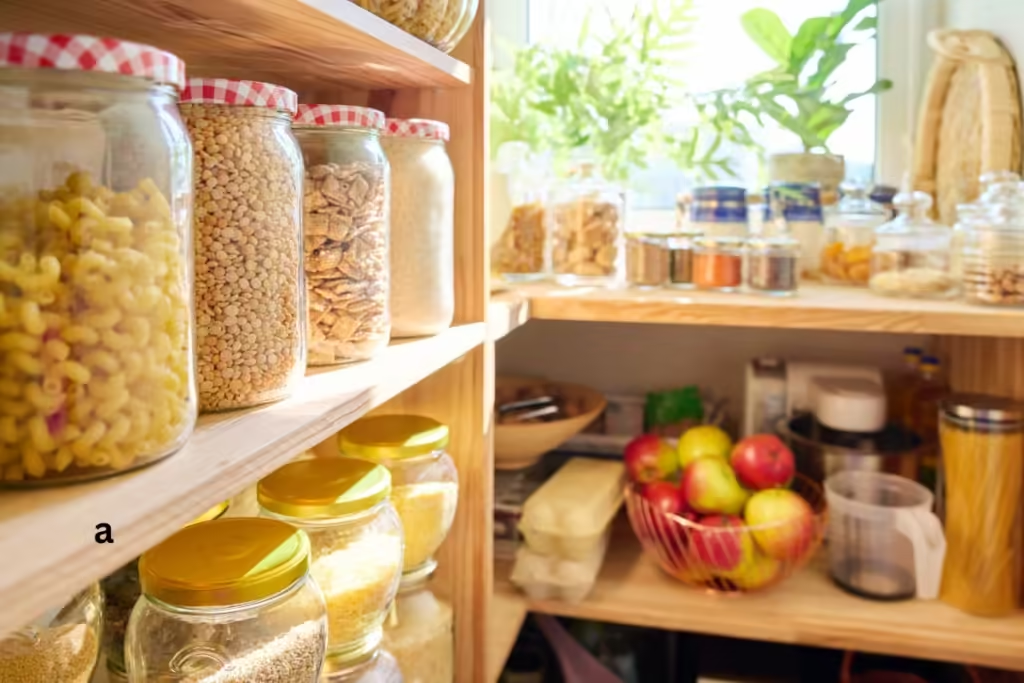
Syngonium Green: A Guide to Care and Growth
Syngonium Green is a popular houseplant known for its attractive foliage and easy care requirements. This versatile plant can thrive in various indoor environments, making it a favorite among both novice and experienced gardeners. With its unique arrow-shaped leaves, Syngonium Green not only adds a lush touch to spaces but also purifies the air, enhancing the atmosphere of any room.
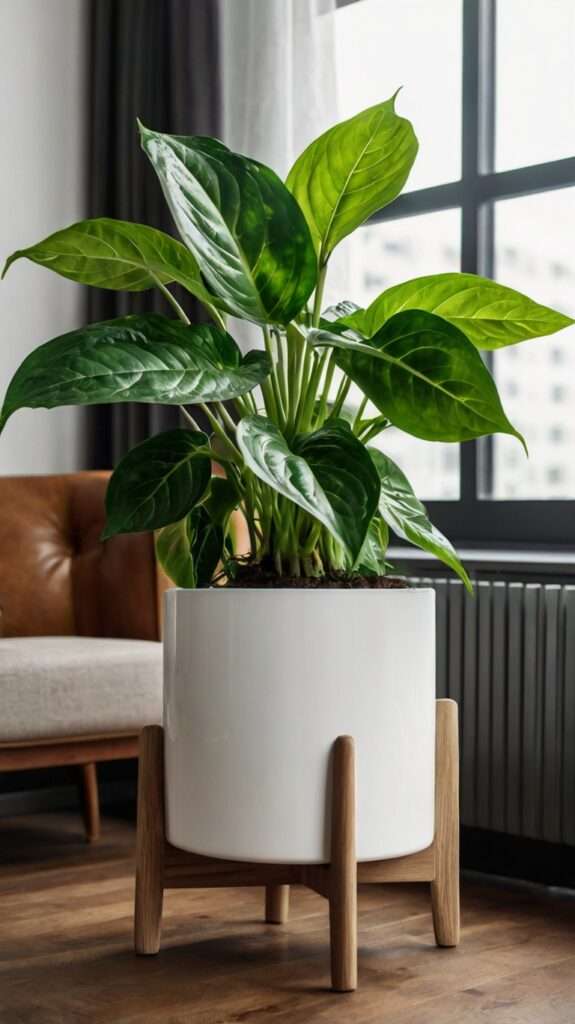
Caring for Syngonium Green is straightforward, as it adapts well to different lighting and moisture conditions. Many people appreciate its ability to grow rapidly and can often propagate it easily. Individuals interested in incorporating this plant into their home decor will discover not only its aesthetic appeal but also its environmental benefits.
As the interest in green indoor plants continues to grow, Syngonium Green stands out for its charm and low maintenance. Understanding how to care for it can help anyone enjoy its beauty for years to come.
Key Takeaways
- Syngonium Green is easy to care for and adapts to many environments.
- It enhances indoor aesthetics and contributes to air purification.
- Propagation is simple, allowing for more plants from a single specimen.
Syngonium Overview
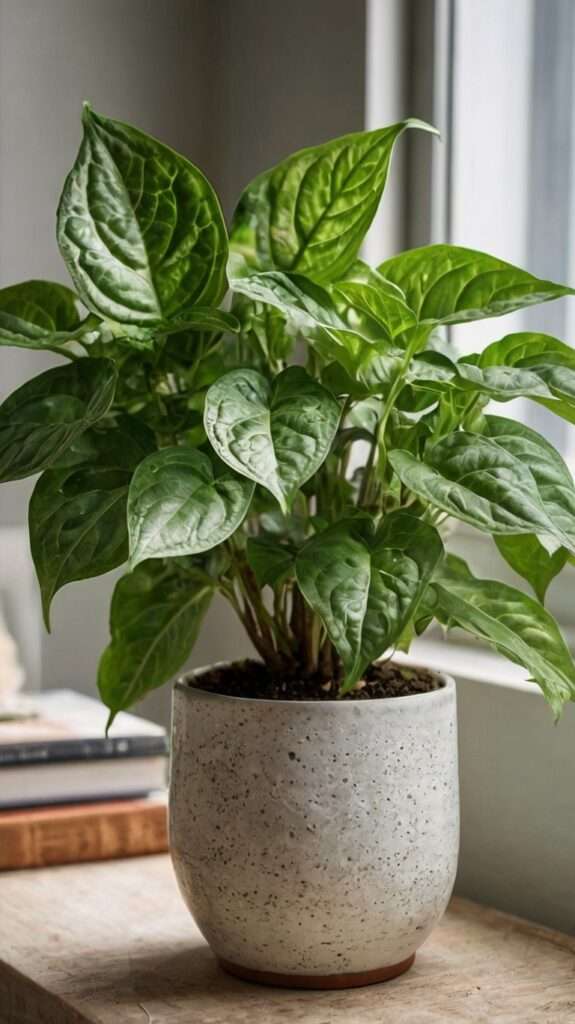
Syngonium, commonly known as the arrowhead plant, is notable for its beautiful, arrow-shaped leaves. This plant includes various species and offers a wide range of attractive varieties. Additionally, it thrives in specific natural habitats, mainly within tropical regions.
Species and Varieties
Syngonium belongs to the Araceae family. The genus includes several species, with Syngonium podophyllum being the most common. This species is recognized for its adaptability and ease of care.
Popular varieties include:
- Syngonium ‘White Butterfly’: Features striking green leaves with white variegation.
- Syngonium ‘Neon Robusta’: Known for its bright green leaves with pink highlights.
- Syngonium ‘Strawberry Cream’: Showcases soft pink and cream-colored foliage.
These varieties differ in color and leaf shape, making them suitable for various indoor settings.
Natural Habitat and Distribution
Syngonium plants are native to tropical rainforests in Central and South America. They typically grow in shaded areas, climbing trees and other structures for support.
In their natural habitat, these plants enjoy high humidity and well-draining soil. They thrive in bright, indirect light but can adapt to lower light levels. This adaptability makes them popular among indoor gardeners.
Whether in nature or as houseplants, Syngonium exhibits resilience and beauty, attracting plant lovers worldwide.
You May Also Like:
The Magic of Lilacs: A Gardener’s Guide to Springtime Beauty
Plant Characteristics
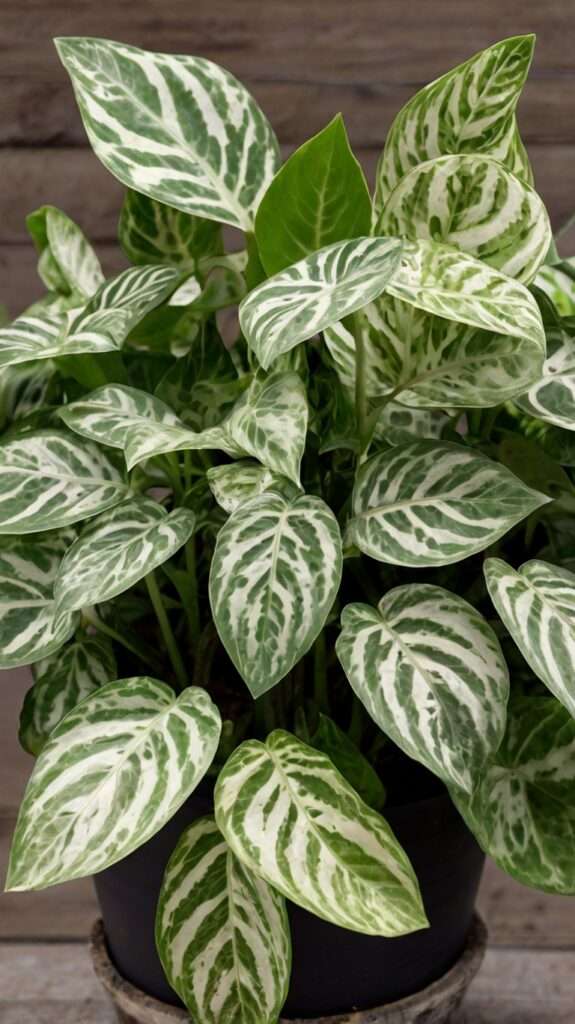
Syngonium green, commonly known as the arrowhead plant, has distinct features that make it appealing. Its striking leaf shapes and growth patterns contribute to its popularity as a houseplant.
Leaf Shape and Texture
The leaves of Syngonium green are distinctive, resembling arrows or spades. Initially, they start as lighter green or silvery and mature into deeper shades of green. This transition adds visual interest.
As the plant matures, the leaves undergo a transformation, shifting from simple arrow shapes to more complex, lobed designs. This change creates a unique texture, making each leaf visually striking.
The leaves are typically smooth, adding to their elegance. They can vary in size, depending on the plant’s age and growing conditions. This variety allows it to fit well into different interior styles.
Growth Habit and Structure
Syngonium green showcases a climbing or trailing growth habit. It can grow up to several feet tall if provided with adequate support. The plant often develops a robust structure, making it a great option for adding vertical space in indoor settings.
The stems are sturdy, allowing the plant to hold its attractive foliage. Regular pruning can encourage bushier growth, enhancing its overall appearance.
Under optimal conditions, Syngonium can thrive in bright, indirect light. It prefers warm, humid environments, aligning with its tropical origins. This growth habit and structure make it a versatile choice for various indoor gardening setups.
Read Also:
Caring for Syngonium Green
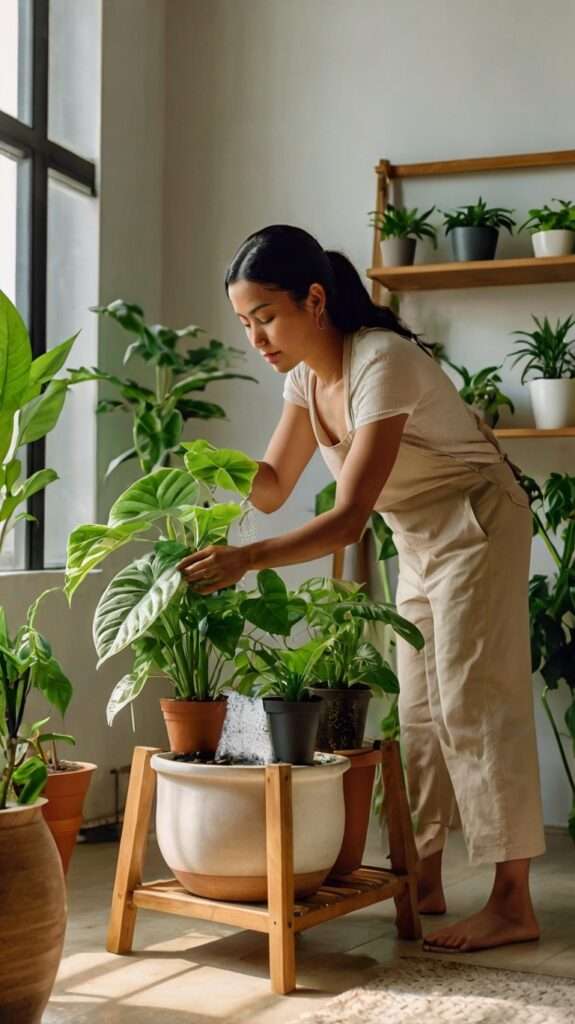
Caring for Syngonium Green involves understanding its specific needs to promote healthy growth. From watering practices to pest management, attention to detail in these areas will ensure a thriving plant.
Watering Requirements
Syngonium Green prefers to be kept relatively moist but not waterlogged. It is best to check the top inch of soil; if it feels dry, it’s time to water. Overwatering can lead to root rot, while underwatering may cause the leaves to curl.
During the growing season, typically spring and summer, watering every week is advisable. In the fall and winter, the frequency can be reduced, as growth slows down. Always ensure that the pot has drainage holes to prevent standing water.
Light and Temperature Needs
This plant thrives in bright, indirect light but can adapt to lower light conditions. Direct sunlight can scorch the leaves, while too little light may stunt growth. Placing it near a window with filtered light is ideal.
Temperature also plays a crucial role. Syngonium Green prefers a range between 65-77°F (18-25°C). If the temperature falls below 60°F (16°C), it may show signs of distress. Keeping the plant away from drafts and heating vents helps maintain a stable environment.
Soil and Repotting
A well-draining, lightweight potting mix works best for Syngonium Green. A combination of potting soil, perlite, and orchid bark ensures good aeration and drainage. Avoid heavy soils that retain too much moisture.
Repotting should be done every 1-2 years or when the roots outgrow the pot. When repotting, gently loosen the roots and remove any dead or rotting parts. Choose a pot that is 1-2 inches larger in diameter to allow for continued growth.
Fertilization Strategy
Regular feeding can promote vigorous growth in Syngonium Green. Using a balanced liquid fertilizer every 4-6 weeks during the growing season can make a significant difference. Dilute the fertilizer to half-strength to avoid harming the roots.
In fall and winter, there is less need for fertilizer since the plant’s growth slows down. A well-fed plant will display healthy, vibrant leaves, whereas a lack of nutrients can lead to pale or yellowing foliage.
Related:
10 Incredible Tips for Thriving Philodendron Micans: A Beginner’s Guide
Common Pests and Diseases

Syngonium Green is susceptible to common pests like spider mites, aphids, and mealybugs. Regularly inspect the leaves for any signs of infestation. If detected, treating the plant with insecticidal soap or neem oil can help control the problem.
Root rot may occur if the plant is overwatered or placed in poorly draining soil. Signs include yellowing leaves and a mushy root system. To prevent root rot, ensure proper watering practices and use an appropriate potting mix.
Pruning and Maintenance
Pruning is essential to maintain the shape and health of Syngonium Green. Removing yellow or damaged leaves helps the plant focus energy on healthy growth. Shearing back leggy growth can also encourage bushier growth.
Regular maintenance includes wiping the leaves with a damp cloth to remove dust. This practice helps improve light absorption and promotes healthier growth. Checking for pests during this process is also beneficial.
Propagation Techniques
Syngonium Green can be easily propagated using specific methods. The two most effective techniques are stem cuttings and layering. Each method offers its own benefits and requires careful attention to detail.
Stem Cuttings
Stem cuttings are a popular way to propagate Syngonium Green. To start, one should select a healthy parent plant with multiple stems. Each cutting should be around 4-6 inches long and must have at least two nodes, where the leaves grow. Using clean, sharp scissors or pruning shears will help prevent damage and infection.
To propagate, place the cuttings in water or soil. If using water, keep the cuttings in a bright area but out of direct sunlight. Change the water regularly to avoid bacteria. In soil, maintaining humidity is key; covering the pot with a plastic bag can help retain moisture. New roots will begin to form within a few weeks.
Layering
Layering is another effective method for propagating Syngonium Green. This technique involves bending a stem down to the soil while it’s still attached to the parent plant. Make a small cut or remove a small section of the stem’s bark at a node to encourage rooting.
Next, bury the wounded area in soil while letting the other part remain above ground. Keep the soil moist but not soggy. Over time, roots will develop at the node. Once a robust root system is established, the new plant can be cut from the parent plant and potted separately. This method allows for a smooth transition to independent growth.
Design and Aesthetics

Syngonium Green brings a vibrant touch to any space with its unique leaf shapes and colors. Its versatility makes it suitable for various indoor styles and arrangements, enhancing design elements in homes and offices.
Indoor Placement and Styling
Syngonium Green thrives in bright, indirect light but can also adapt to lower light conditions. Placing it on a shelf or a table allows its trailing vines to showcase their beauty. It can elegantly cascade over the sides of planters, giving a lush, green look.
For modern aesthetics, it pairs well with minimalist decor. Using glossy or textured pots adds contrast to the vibrant green leaves. Grouping multiple plants can create a focal point, especially when varying pot heights and styles. Consider using a hanging basket, allowing the leaves to drape elegantly.
Companion Plants
Choosing the right companion plants can enhance the beauty of Syngonium Green. It pairs well with other tropical plants like pothos, peace lilies, and ferns. These plants have similar care requirements, ensuring a cohesive display.
Tropical companions, like Monstera or ZZ plants, contrast textures and colors effectively. When selecting plants, focus on those with similar light and water needs. This approach not only helps maintain a healthy environment but also creates an attractive arrangement.
List of Ideal Companion Plants:
- Pothos
- Peace Lily
- Ferns
- Monstera
- ZZ Plant
Environmental Impact

Syngonium green, particularly the species Syngonium podophyllum, can have significant environmental effects. It is known to be a fast-growing vine that thrives in warm and humid areas.
This plant can become invasive in certain regions. It climbs trees and structures, which may lead to:
- Shade and competition: It can overshadow native plants.
- Forest canopy alteration: It can disrupt local ecosystems by altering light penetration.
In its native habitat, Syngonium contributes to biodiversity. It provides shelter and food for various insects and animals. However, when introduced to new areas, it often lacks natural predators.
Care should be taken when cultivating Syngonium green outdoors. Gardeners should monitor its growth to prevent it from spreading beyond intended areas. Proper management techniques include:
- Regular pruning to control size.
- Removing any escaping vines.
In controlled environments, such as homes or greenhouses, it poses less risk. Here, it can improve indoor air quality and enhance aesthetic appeal without negative side effects.
Being mindful of its growth habits will aid in maintaining balance in both gardens and natural environments. Responsible cultivation practices are essential to minimize its impact on local ecosystems.
Purchasing Tips

When looking to buy a Syngonium green, there are several factors that can help in making an informed choice.
Check the Leaves
Look for healthy, vibrant leaves. They should be firm and free from spots or discoloration. Wrinkled leaves can indicate dehydration.
Inspect the Soil
The soil should be slightly moist but not soggy. If it’s too dry or too wet, the plant may have care issues.
Examine the Roots
If possible, gently remove the plant from its pot. Healthy roots should be white or light tan and not too crowded.
Consider the Size
Smaller plants are easier to care for as they adapt well. Larger plants may require more attention and space.
Choose a Trusted Seller
Purchase from reputable nurseries or online stores. Read reviews to ensure quality.
Understand the Pricing
Syngonium plants can vary in price based on variety and size. Compare prices to ensure a fair deal.
Ask About Care
Inquire about the specific care requirements of the Syngonium they are purchasing. This ensures they can provide the right conditions at home.
Conclusion: Embracing the Beauty and Benefits of Syngonium Green
As you’ve discovered throughout this comprehensive guide, Syngonium Green is a captivating houseplant that offers a wealth of benefits, from its striking foliage to its air-purifying properties. By mastering the art of Syngonium care, you can unlock the full potential of this versatile plant and enjoy its lush, verdant presence in your indoor environment.
Whether you’re drawn to the plant’s transformative leaf shapes, its easy-care nature, or its ability to complement a wide range of interior design styles, Syngonium Green is a rewarding addition to any plant enthusiast’s collection. By following the guidance outlined in this guide, you’ll be well on your way to cultivating a thriving, long-lasting Syngonium Green that will bring a touch of tropical elegance to your space.
So, why not embark on your Syngonium Green journey today? With its alluring aesthetics, air-purifying benefits, and straightforward care requirements, this remarkable houseplant is sure to become a beloved companion in your indoor oasis. Embrace the beauty and versatility of Syngonium Green, and watch as it transforms your living or work space into a lush, tropical haven.
Frequently Asked Questions about Syngonium Green
- How much light does a Syngonium Green plant need?
Syngonium Green thrives in bright, indirect light. It can tolerate lower light conditions, but may not grow as vigorously. Avoid exposing it to direct sunlight, as this can scorch the leaves. - How often should I water a Syngonium Green plant?
During the growing season, water your Syngonium Green about once a week, allowing the top inch of soil to dry out before watering again. In the fall and winter, reduce watering frequency to prevent overwatering. - What type of soil is best for Syngonium Green?
A well-draining, lightweight potting mix is ideal for Syngonium Green. A blend of potting soil, perlite, and orchid bark provides the perfect balance of moisture retention and aeration. - How often should I fertilize a Syngonium Green plant?
Feed your Syngonium Green with a balanced liquid fertilizer every 4-6 weeks during the growing season, diluted to half-strength. Reduce fertilization in the fall and winter when growth slows down. - Can I propagate a Syngonium Green plant?
Yes, Syngonium Green can be easily propagated through stem cuttings or layering. Both methods allow you to create new, genetically identical plants from the parent. - Is Syngonium Green toxic to pets?
Yes, Syngonium Green is considered mildly toxic to pets, such as cats and dogs, if ingested. Keep the plant out of reach of curious pets to avoid potential health issues. - How can I troubleshoot common issues with Syngonium Green?
Common problems include pests like spider mites and aphids, as well as root rot from overwatering. Regularly inspect the plant, address any issues promptly, and maintain proper care practices to keep your Syngonium Green thriving.
Remember, by understanding the unique needs and characteristics of Syngonium Green, you can provide the optimal care and environment for this captivating houseplant to thrive in your indoor space. Enjoy the journey of cultivating a healthy, vibrant Syngonium Green that will bring a touch of tropical beauty to your home or office.
References
- The Spruce
Comprehensive care guides for houseplants, including Syngonium Green.
Website: The Spruce – Syngonium Plant Care - Gardening Know How
Details on Syngonium Green propagation and care.
Website: Gardening Know How – Arrowhead Plant Care - Plant Care Today
Care tips, watering needs, and growing conditions for Syngonium varieties.
Website: Plant Care Today – Syngonium Care Guide - Missouri Botanical Garden
A resource for plant taxonomy, characteristics, and habitat.
Website: Missouri Botanical Garden – Syngonium Podophyllum

